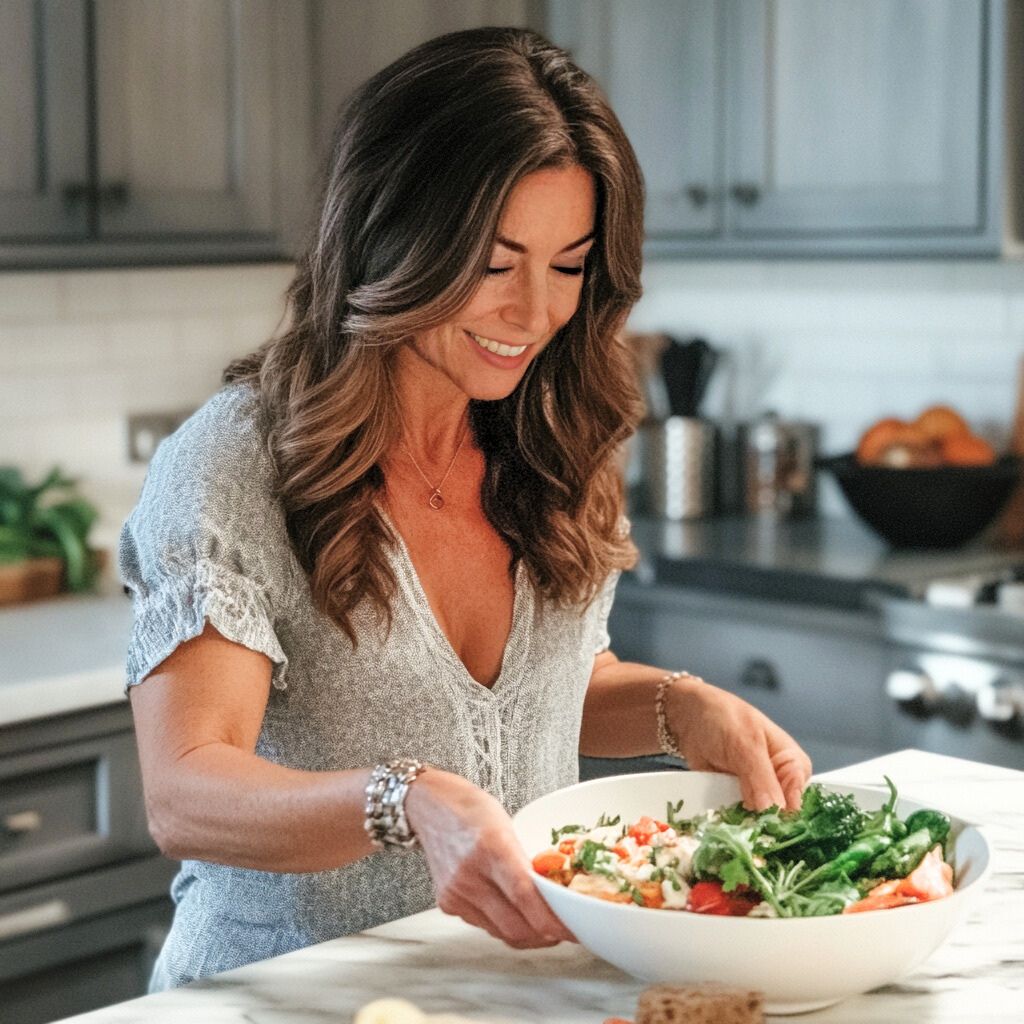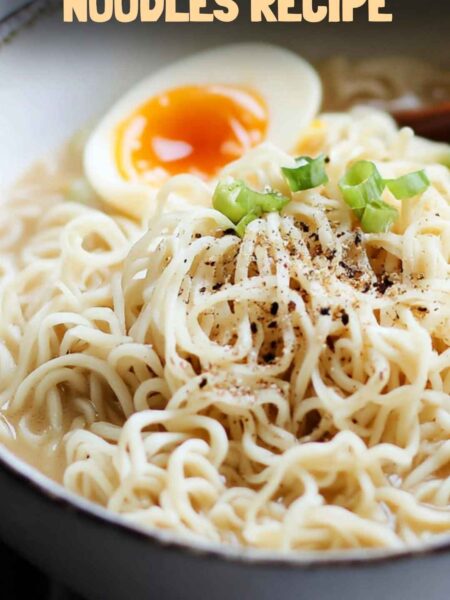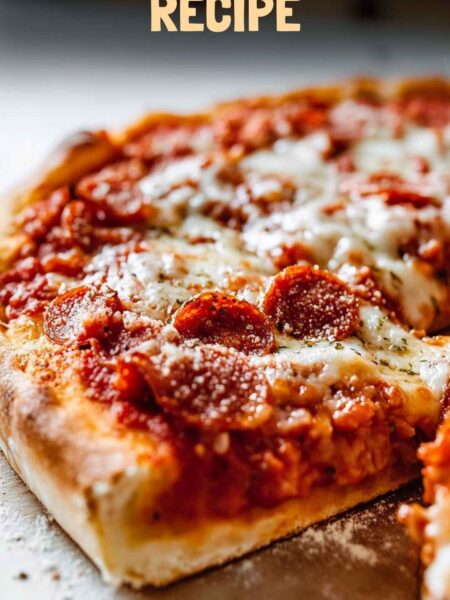Before diving into the wonders of making authentic Thai red curry paste, let’s talk about what dishes pair beautifully with it. Think of crisp, fluffy jasmine rice that soaks up every drop of the vibrant curry.
Coconut rice can bring an extra layer of flavor, marrying sweetness and creaminess with the spiciness of the paste. Additionally, a fresh Thai salad with crunchy vegetables adds a refreshing contrast that complements the heat.
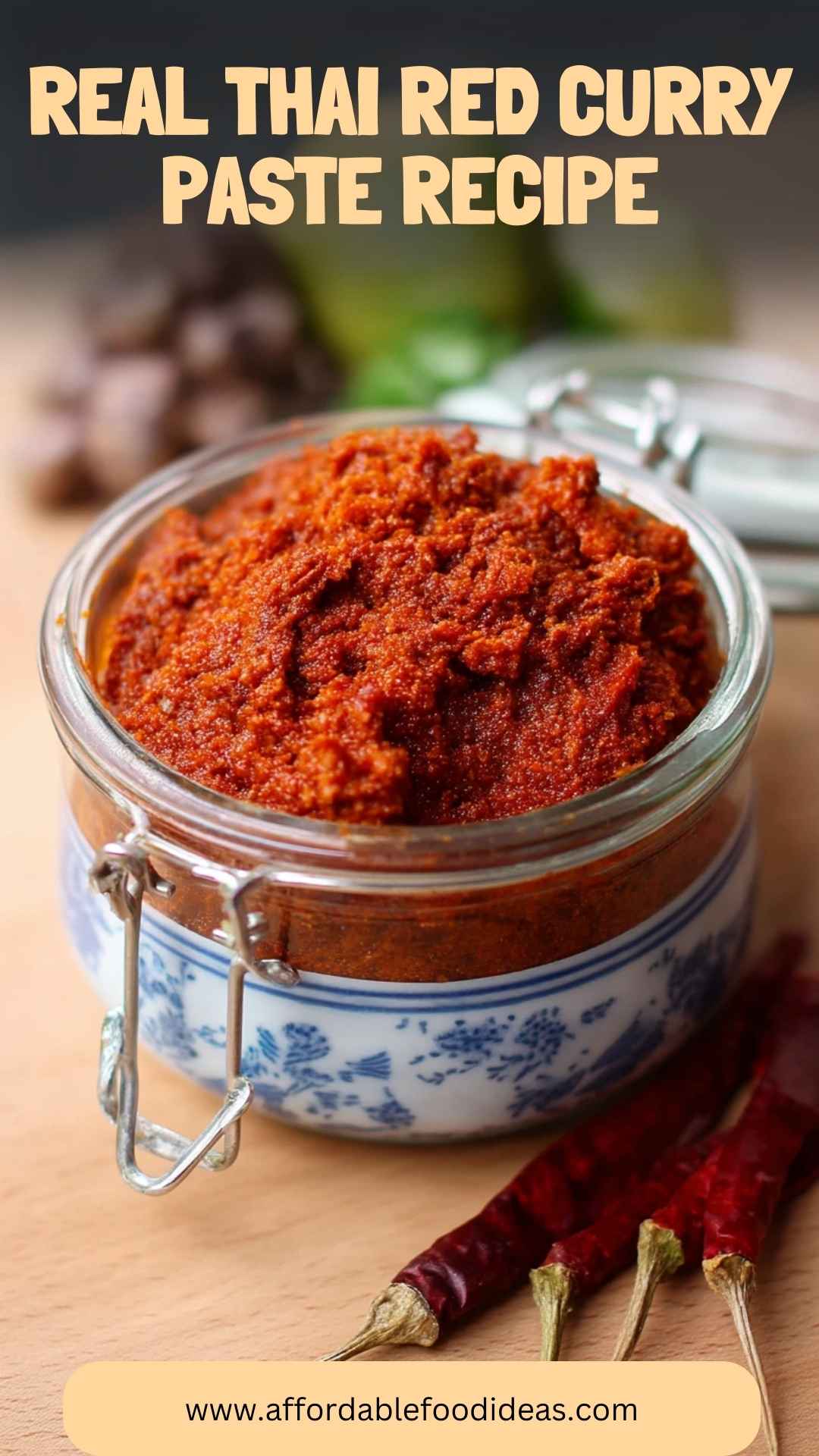
What is Real Thai Red Curry Paste?
Real Thai red curry paste, or ‘Nam Prik Pahd,’ is a cornerstone of many Thai dishes. It’s not just a simple condiment; it’s an intricate blend of natural ingredients like red chilies, lemongrass, garlic, and various spices.
Each component brings its character, contributing to a harmonious taste that’s hot, sweet, and savory all at once.
Why This Recipe Works?
1. Fresh Ingredients Make All the Difference
Using fresh ingredients creates a taste that’s second to none. The vibrant colors and aromas elevate your cooking experience, inspiring creativity while you whip up your dish in the kitchen.
2. Simplicity with Complex Flavors
Despite its complexity, the process of making curry paste is straightforward. With just a few steps, you’ll achieve rich and complex flavors that impress even the most discerning palates.
3. Customizable Spice Levels
By controlling the number of chilies and choosing the right ones, you can adjust the heat to match your personal taste. Want a mild kick or a fiery experience? The choice is yours!
4. Versatility in Cooking
Real Thai red curry paste is not limited to just one recipe. Use it in soups, marinades, or even salad dressings. The possibilities are endless, allowing you to mix and match with various proteins and vegetables.
Ingredients You’ll Need to Make This Dish
Making your own Thai red curry paste is simple. Here’s what you’ll need:
- 1 teaspoon palm sugar
- 2 teaspoons freshly grated lime zest
- 1 stalk lemongrass (only the bottom half), thinly sliced
- 6 garlic cloves, finely chopped
- 2 teaspoons fermented shrimp paste
- ½ teaspoon white peppercorns
- ½ ounce hot dried red chilies, such as Thai or arbol chilies, chopped into ½-inch pieces
- ¾ ounce mild dried red chilies, such as guajillo or puya, chopped into ½-inch pieces
- 4 cilantro roots, or 10 to 12 stems of cilantro, chopped
- 2 tablespoons finely minced galangal
- ½ cup finely chopped shallots
- 1 teaspoon coarse sea salt
- 2 teaspoons coriander seeds, toasted
- 1 teaspoon cumin seeds, toasted
- 1 teaspoon dried kaffir lime leaves, crushed
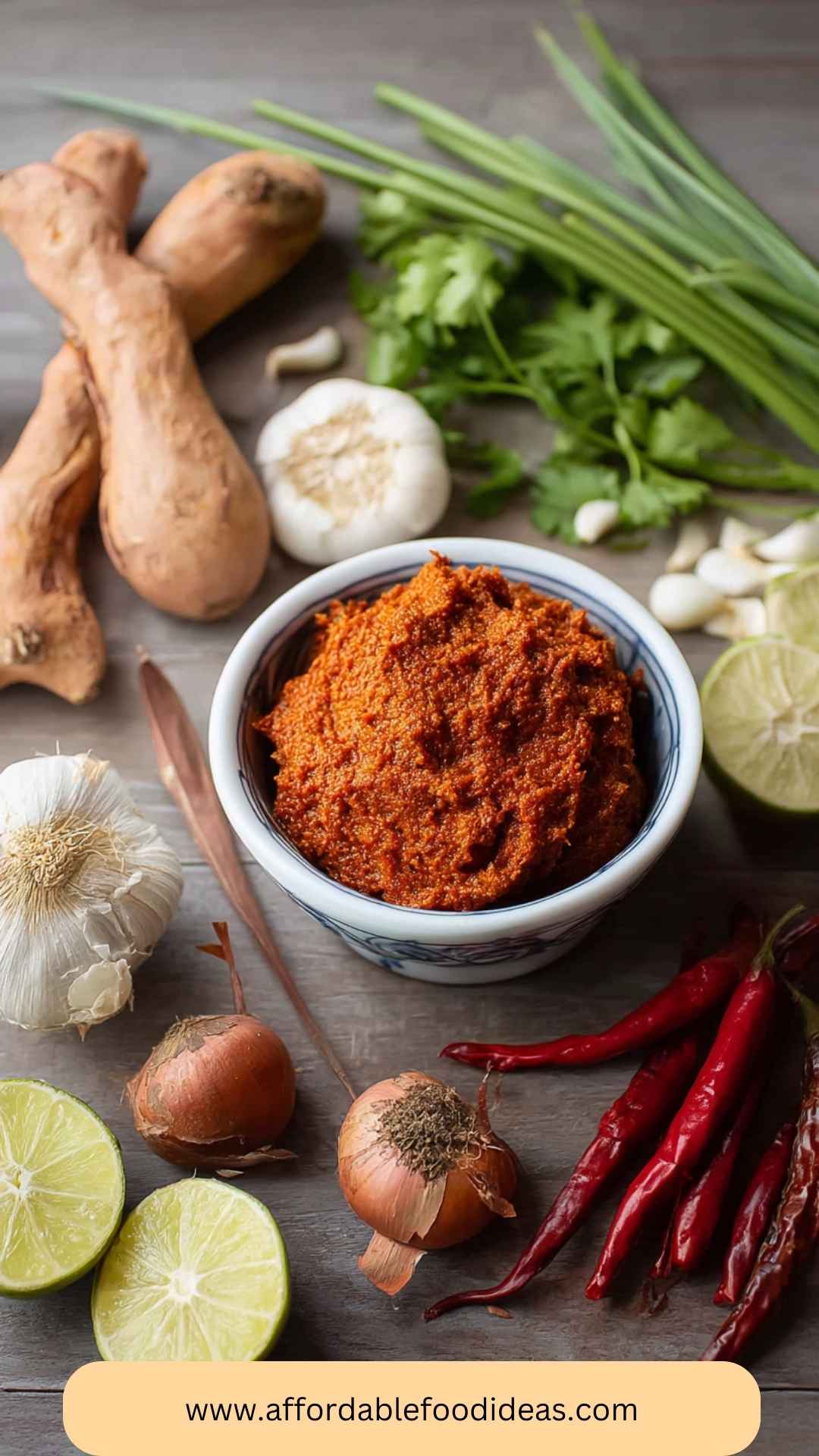
How to Make This Real Thai Red Curry Paste?
Making your own Thai red curry paste is satisfying. Let’s break it down into clear steps.
Step 1: Prepare the Ingredients
Start by gathering all your ingredients. Chop the garlic, lemongrass, shallots, and galangal finely. It helps to have everything prepped before you start blending.
Step 2: Toast Spices (Optional)
If you’re using coriander and cumin seeds, toast them in a dry skillet over medium heat for 3-4 minutes or until fragrant. This step enhances the flavors.
Step 3: Blend the Paste
In a food processor or mortar and pestle, combine all the ingredients: garlic, lemongrass, galangal, shallots, chilies, shrimp paste, lime zest, palm sugar, peppercorns, and salt. Blend until you get a smooth paste.
Step 4: Adjust Consistency
If the mixture is too thick, add a little water to help it blend. However, avoid making it too runny; you want a paste-like consistency.
Step 5: Store or Use Immediately
Use the paste immediately in your favorite curry recipes. Alternatively, transfer it to an airtight container and refrigerate for up to two weeks, or freeze it for longer shelf life.
Tips & Tricks
To help you on your culinary journey, here are some valuable tips:
- Use Fresh Ingredients: Freshness boosts flavor, so seek out quality herbs and spices.
- Experiment with Spice Levels: Start low with chilies. You can always add heat, but you can’t take it back.
- Make a Big Batch: This paste keeps well. Consider making a double batch to have on hand for those busy weeknights.
- Use a Mortar and Pestle for Authenticity: While a food processor works, a mortar and pestle can give you a different texture that some chefs prefer.
- Pair with Coconut Milk: Creamy coconut milk balances the spice beautifully. Use it as a base for your curries.
How Do You Store The Leftovers?
Storing leftovers properly ensures you have authentic Thai red curry paste ready when inspiration strikes.
Place your paste in an airtight container, ensuring it’s sealed tightly. You can refrigerate it for up to two weeks, or extend its lifespan by freezing it in ice cube trays. Once solid, transfer the cubes to a zip-top bag. They’ll keep for about three months.
What Sides Would Complement Real Thai Red Curry Paste?
1. Jasmine Rice
This classic side dish is a match made in culinary heaven with red curry. Its fluffy texture absorbs all the rich flavors. Cooking jasmine rice is simple; combine one part rice with two parts water, bring it to a boil, then reduce to a simmer until all water is absorbed.
2. Coconut Rice
If you’re feeling a little adventurous, coconut rice takes the experience up a notch. Replace some of the water with coconut milk for a sweet twist. It balances the curry’s heat beautifully and adds a lovely creaminess.
3. Thai Cucumber Salad
A crunchy, refreshing salad cuts through the spiciness. Dice cucumbers, and toss them with vinegar, sugar, cilantro, and a bit of chili for a zesty side that’s quick yet delightful.
What Alternatives Can You Use for the Ingredients If They Are Not Present in Your Kitchen?
1. Palm Sugar Substitutes:
If you can’t find palm sugar, brown sugar works well. It has similar sweetness and a hint of molasses that adds depth.
2. Shrimp Paste Alternatives:
For a vegetarian option, miso paste can be a substitute. It provides that umami flavor, but start with a smaller amount, as it may overpower.
3. Lemongrass Replacement:
If you’re out of lemongrass, lemon zest or lime zest can add a similar citrusy note. Just a hint is needed to replicate that fresh flavor.
4. Galangal Substitutes:
Ginger is a good alternative for galangal. While their flavors aren’t identical, fresh ginger offers the warmth and spice you need.
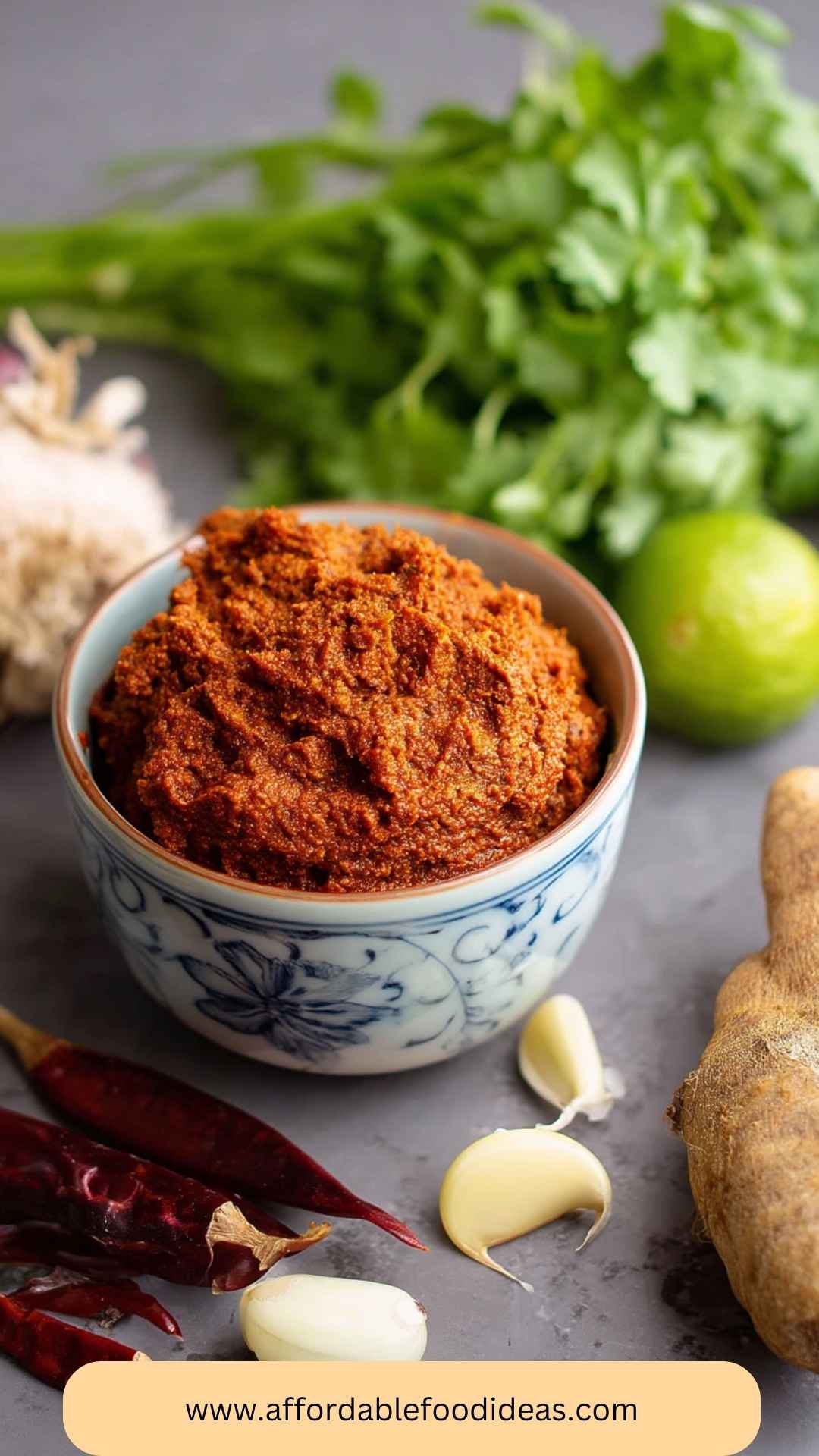
Conclusion
Making real Thai red curry paste is not just a culinary skill; it’s an adventure into the heart of Thai cuisine. Fresh ingredients, simplicity, and versatility make it a favorite in my kitchen.
Whether you use it right away or save it for later, this paste is sure to add excitement to your meals.
So, get cooking! Dive into the world of flavors, and enjoy the warmth and deliciousness that homemade Thai red curry paste brings to your table. Happy cooking!
You’ll also like the following recipes!
Real Thai Red Curry Paste Recipe – Affordable Food Ideas
I’m excited to share my culinary journey with you today. Thai cuisine has a special place in my heart, and one of its crowning jewels is the red curry paste. It’s a blend of fragrant herbs and spices that transforms simple ingredients into something extraordinary.
Whether you're a seasoned cook or just starting out, this paste opens up a world of flavors you won't want to miss.
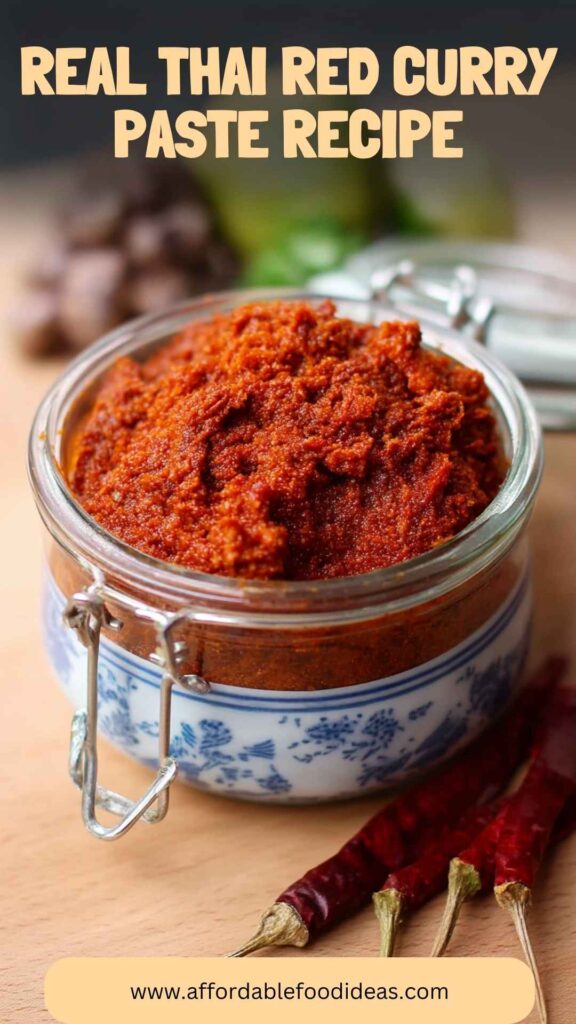
Ingredients
Ingredients
Instructions
Step 1: Prepare the Ingredients
-
Start by gathering all your ingredients. Chop the garlic, lemongrass, shallots, and galangal finely. It helps to have everything prepped before you start blending.
Step 2: Toast Spices (Optional)
-
If you're using coriander and cumin seeds, toast them in a dry skillet over medium heat for 3-4 minutes or until fragrant. This step enhances the flavors.
Step 3: Blend the Paste
-
In a food processor or mortar and pestle, combine all the ingredients: garlic, lemongrass, galangal, shallots, chilies, shrimp paste, lime zest, palm sugar, peppercorns, and salt. Blend until you get a smooth paste.
Step 4: Adjust Consistency
-
If the mixture is too thick, add a little water to help it blend. However, avoid making it too runny; you want a paste-like consistency.
Step 5: Store or Use Immediately
-
Use the paste immediately in your favorite curry recipes. Alternatively, transfer it to an airtight container and refrigerate for up to two weeks, or freeze it for longer shelf life.
Nutrition Facts
Servings 4
- Amount Per Serving
- Calories 36kcal
- % Daily Value *
- Total Fat 0.5g1%
- Cholesterol 3mg1%
- Total Carbohydrate 7g3%
- Dietary Fiber 1g4%
- Sugars 2g
- Protein 2g4%
* Percent Daily Values are based on a 2,000 calorie diet. Your daily value may be higher or lower depending on your calorie needs.
Note
- Use Fresh Ingredients: Freshness boosts flavor, so seek out quality herbs and spices.
- Experiment with Spice Levels: Start low with chilies. You can always add heat, but you can’t take it back.
- Make a Big Batch: This paste keeps well. Consider making a double batch to have on hand for those busy weeknights.
- Use a Mortar and Pestle for Authenticity: While a food processor works, a mortar and pestle can give you a different texture that some chefs prefer.
- Pair with Coconut Milk: Creamy coconut milk balances the spice beautifully. Use it as a base for your curries.

